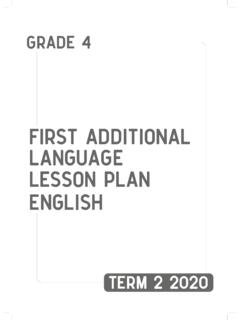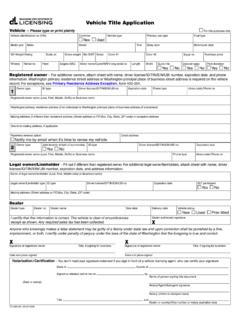Transcription of Attainment of pupils with English as an additional language
1 Attainment of pupils with English as an additional language Ad-hoc notice June 2019 2 Background Attainment of pupils with English as an additional language (EAL) is published in our regular statistical releases1. These show that the Attainment of EAL pupils is similar to that for pupils with English as their first language . However, the English language skills of this group will vary considerably; at one extreme, there are pupils who have lived in England all their life who are likely to have been fluent in English from a very young age at the other extreme, there are pupils who have arrived in England very recently who could have very little understanding of English . We do not collect data on a pupil s arrival date in an English -speaking country.
2 However, we have used the school census2 to identify the academic year that each pupil first appeared in a state-funded school in England. This will be a good proxy for their arrival date in England though some pupils may have attended an independent school in England prior to attending a state-funded school. In addition, some pupils may have lived in an English -speaking country prior to arriving in England. Academic year of joining English education 126,100 pupils at the end of key stage 2 had a first language other than English this is 17 % of all pupils at the end of key stage 2. 79% of these pupils joined an English school in reception. 86,000 pupils at the end of key stage 4 had a first language other than English this is 14% of all pupils at the end of key stage 4.
3 63% of these pupils joined an English school in reception and 82% joined during primary school (see table 1). 1 KS2 - multi -academy-trust-performance-2018-revised KS4 - multi -academy-trust-performance-2018-revised 2 Including the PRU and AP census. 3 Table 1: Number of pupils with English as an additional language pupils at the end of key stage 2 in 2017/18 pupils at the end of key stage 4 in 2017/18 Number Percentage Number Percentage pupils with English first language 491,300 - 435,400 - pupils with other first language 126,100 - 86,300 - of which arrived in: Reception 100,000 79% 54,400 63% Year 1 4,800 4% 3,600 4% Year 2 4,200 3% 2,700 3% Year 3 4,600 4% 2,300 3% Year 4 4,800 4% 2,400 3% Year 5 4,700 4% 2,600 3% Year 6 3,100 2% 2,700 3% Year 7 - - 3,500 4% Year 8 - - 3,400 4% Year 9 - - 3,700 4% Year 10 - - 3,700 4% Year 11 - - 1,300 1% Unknown first language 1,900 - 1,900 - Attainment of EAL pupils Key stage 2 Figure 1 shows Attainment at the end of key stage 2 for EAL pupils by time of joining an English school3.
4 The horizontal line shows the corresponding percentage for all pupils whose first language is English . Those EAL pupils who joined an English school in reception were slightly more likely to reach the expected standard in reading, writing and maths than pupils whose first language was English . EAL pupils who joined an English school after reception were less likely to reach the expected standard than pupils whose first language was English , with the likelihood of a pupil meeting this standard declining the later they arrived. 3 We have not controlled for any differences in the characteristics of those arriving in the English education system at different times.
5 4 Figure 1: Percentage of pupils reaching the expected standard in reading, writing and maths by time of joining an English school Base: pupils at the end of key stage 2 in state-funded schools, 2017/18 Key stage 4 Figure 2 shows the average Attainment 8 score for EAL pupils by time of joining an English school. The horizontal line shows the corresponding score for all pupils whose first language is English . EAL pupils who joined an English school before year 2 have, on average, a slightly higher Attainment 8 score than pupils whose first language was English . EAL pupils who joined an English school after this tend to have lower Attain ment 8 scores, with Attainment 8 scores declining noticeably for pupils who arrived after year 8.
6 Figure 2: Average Attainment 8 score by time of joining an English school Base: pupils at the end of key stage 4 in state-funded schools, 2017/18 Crown copyright 2019 This publication (not including logos) i s l icensed under the ter ms of t he Open Government Licence except where otherwise stated. Where we have identified any third party copyright information you will need to obtain permission from t he copyright holders concerned. To view this l icence: visit icence/version/3 ema il write to Information Policy Team, The National Archives, K ew, London, TW9 4DU About this publication: enquiries: Jayne Middlemas, Early years, Schools and SEND Analysis and Research Division, Department for Education, St Paul s Place, Sheffield, S1 2FJ email: or download Reference: DFE-00119-2019 Follow us on Twitter: @educationgovuk Like us on Facebook.












